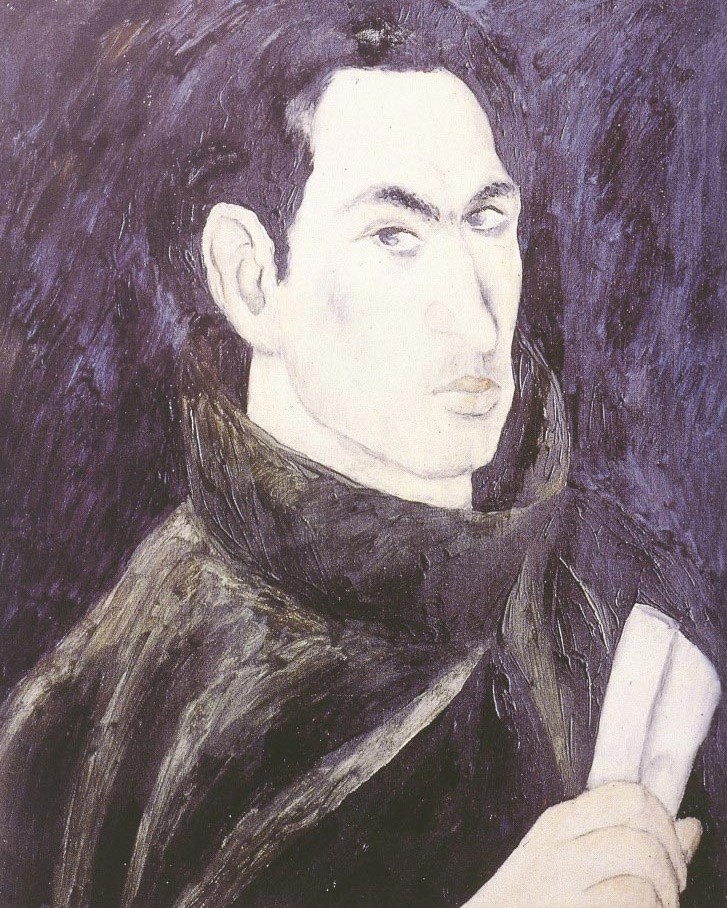Moses BAGEL
January 1, 2019Max BAND
January 1, 2019Jacob BALGLEY
BREST-LITOWSK (BELARUS) 1891 – PARIS 1934
Jacob Balgley was still a teenager when he left his father, who was a rabbi, to study medicine in Saint Petersburg. At that time, he was already painting icons to provide for himself. Eventually, he chose to dedicate himself to drawing and studied architecture at the School of Fine Arts in Odessa. In 1911, Balgley left Russia. In 1913, he settled in Paris, in the Montparnasse district, at 9 impasse de l’Enfant-Jésus. Although the young artist was a talented engraver, he also produced oil paintings, which recall the popular imagery of his native Russia. In Paris, he continued his architecture studies at the Ecole des Beaux-Arts and enrolled at the Ecole Pratique des Hautes Etudes in 1915 where he studied philosophy and history. He volunteered and joined the army in 1914, but was discharged from service because of a heart condition.
In 1918, he did eighteen wood engravings, which illustrated a book of stories published by François Bernouard. On February 23, 1920, Balgley joined the Ecole des Arts Décoratifs (school of decorative arts) and met his future wife Alice Kerfers. They both traveled several times to Italy, to the French Riviera, and to Palestine. Balgley’s patron Dr Kritchevsky organized his first solo exhibition, the only one that took place in his lifetime, at the art dealer Barbazanges in 1924. That same year, he acquired French nationality and the Musée du Luxembourg purchased two engravings, two drawings, and an oil painting by Balgley. In 1925, he produced twenty-one etchings for the album Etudes inachevées. In 1928, his technique had expressionist characteristics. He continued to paint until 1934. That year, he died of a heart attack; he was forty-three years old. A posthumous exhibition was held in his studio.
Stories of Jewish Artists of the School of Paris 1905-1939
FRENCH-ENGLISH
Capitale des arts, le Paris des années 1905-1939 attire les artistes du monde entier. De cette période de foisonnement, un terme est resté, celui d'Ecole de Paris, qui recouvre une grande diversité d'expression artistique. Dans ce brassage dont Montparnasse est le creuset, un groupe se distingue : celui des artistes juifs venus de Russie, de Pologne et d'Europe centrale. Si leurs styles sont variés, un destin commun les rassemble : ils fuient l'antisémitisme de leur pays d'origine. Certains ont connu la célébrité dès les années 1920, tels Soutine, Lipchitz ou Chagall. D'autres n'ont pas eu le temps ou la chance d'y accéder. Près de la moitié a péri dans les camps de concentration nazis.
From 1905 to 1939, Paris attracted artists from all over the globe as the capital of the art world. This period of artistic proliferation became known as the School of Paris, and includes a great diversity of artistic expression. Within the teeming art world centred on Montparnasse, one group set itself apart: Jewish artists from Russia, Poland, and Central Europe. Although their styles were diverse, they shared the common fate of fleeing anti-Semitic persecutions in their home countries. Some became famous in the 1920s, such as Soutine, Lipchitz, and Chagall, while others did not have the time or the luck to gain renown. Nearly half of these artists died in Nazi concentration camps.





